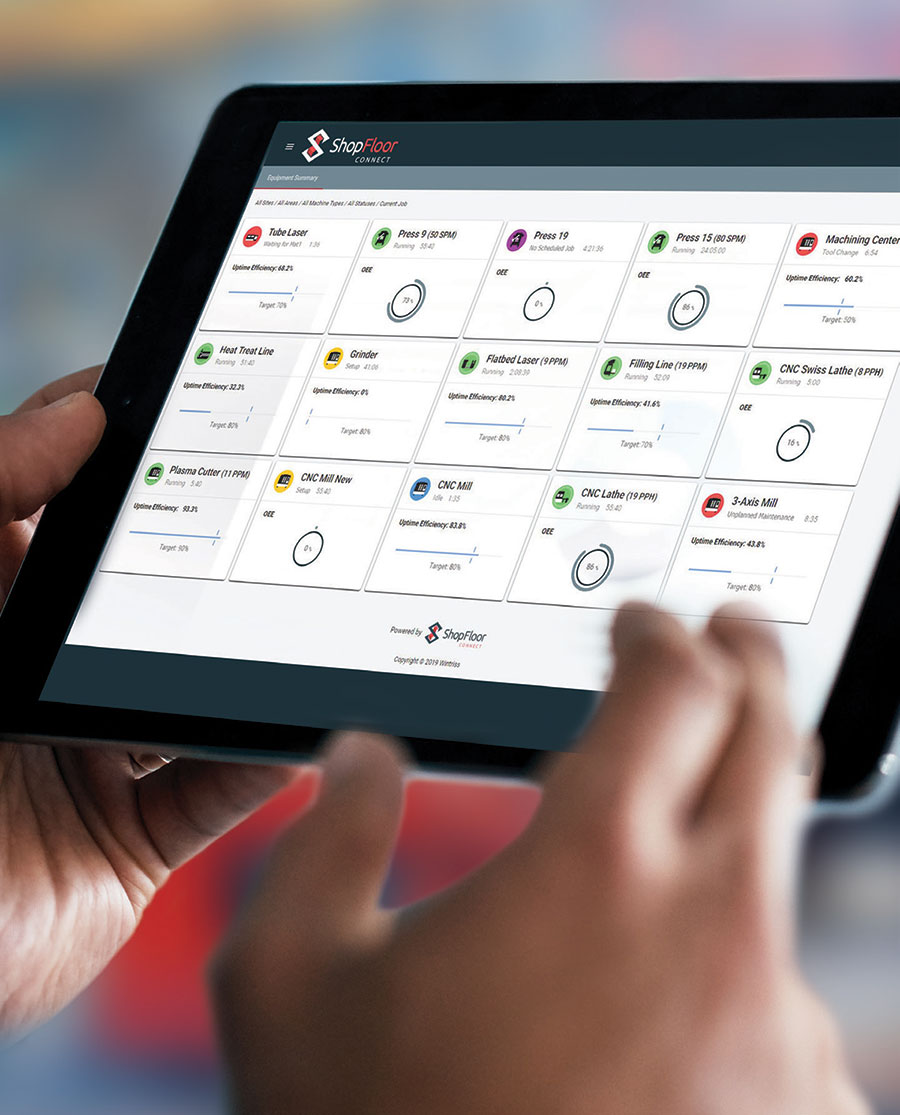he gold standard was formalized prior to 1812 to back the value of paper banknotes. This monetary regime is no longer used, but the phrase became synonymous with a benchmark for quality. For fabricators, overall equipment effectiveness (OEE) is considered the gold standard for measuring productivity.
The classic OEE calculation takes into account machine availability, performance and quality. The resulting percentage score shows a manufacturer how production processes are performing and captures the reason for losses. “An OEE score of 100 percent means you are making only good parts as fast as possible with no unplanned downtime,” explains Jim Finnerty, Wintriss Controls Group LLC product manager.
“OEE was originally intended to be a quick, manual back-of-a-napkin way to determine true efficiency,” Finnerty notes. Over time, calculations became increasingly complex when trying to track OEE over a period of time—especially for machines running jobs with varying production rates. “It was never meant to be used for continuous monitoring of productivity,” Finnerty says, “but that is starting to change.”

Wintriss’ ShopFloorConnect data collection software takes measuring productivity to the next level by using advanced algorithms to continuously and accurately monitor OEE. The software is also suited for challenging low-volume, high-mix production environments.
In 2019, Wintriss demonstrated ShopFloorConnect 6.0 at Fabtech. In addition to advanced OEE metrics, it uses a new format for easier access to data, customizable reports and dashboards, flexible scheduling capabilities, and machine interface enhancements—all of which are critical for OEE.
The main thrust for OEE improvement has traditionally focused on machine availability and downtime reduction. A key advantage, says Finnerty, is ShopFloorConnect’s ability to both automatically collect reasons for downtime based on inputs from the machine control, and through custom menus from which an operator can select pre-specified reasons.
“We recommend that manufacturers keep the downtime reasons list small,” Finnerty says. “The top five selections for possible problems could simply be Quality, Material, Maintenance, Personnel or ‘I don’t know.’ If an operator selects ‘I don’t know,’ the software automatically texts or emails a supervisor.”
“People say you can’t predict downtime,” he continues. “But it’s not the catastrophes that eat up your uptime. It’s the repetitive, mostly unnoticed inefficiencies that add up. It could be time spent waiting for quality control approval, or an operator boxing up parts while the machine is stopped. It’s the little things that can kill productivity.”
ShopFloorConnect 6.0 provides manufacturers with tools to identify other ways to improve the OEE of their machines by focusing on quality, and tracking the reasons for scrap. With version 6.0, machine operators and quality control personnel can specify a reason any time parts are scrapped or reworked.
Alerts are custom text or email messages sent to pre-selected recipients when certain conditions are present at a machine. “The alert feature is the gift that keeps on giving,” says Finnerty. “Fabricators have a new set of tools to improve productivity because they can respond more quickly to each event. Downtime can be reduced, even on machines where further process-related downtime reductions were considered cost-prohibitive.”
Alerts can notify an operator when an unattended machine has stopped running, indicate when maintenance is due, inform management when a critical customer job goes down, or notify a forklift driver when a scrap bin needs to be replaced. ShopFloorConnect can generate multiple alerts for each machine and select recipients according to shift schedules.
Case in point, an automotive manufacturer’s downtime reports indicated coil-fed stamping presses were experiencing a combined average of 60 hours of downtime per week for raw material replenishment.
The downtime was costing the company about $200 per hour. The manufacturer installed ShopFloorConnect, which revealed that the downtime was three times greater than previous time studies indicated. The manufacturer was able to use the data to justify hiring a junior setup operator to monitor the press area and identify machines due for a coil change, locate the material and stage it so the operator could quickly reload the feed when the old coil ran out. Downtime was reduced 66 percent. According to Finnerty, the manufacturer exchanged 40 hours of labor at $25 per hour for 40 hours of uptime valued at $200 per hour.
wintriss.com.